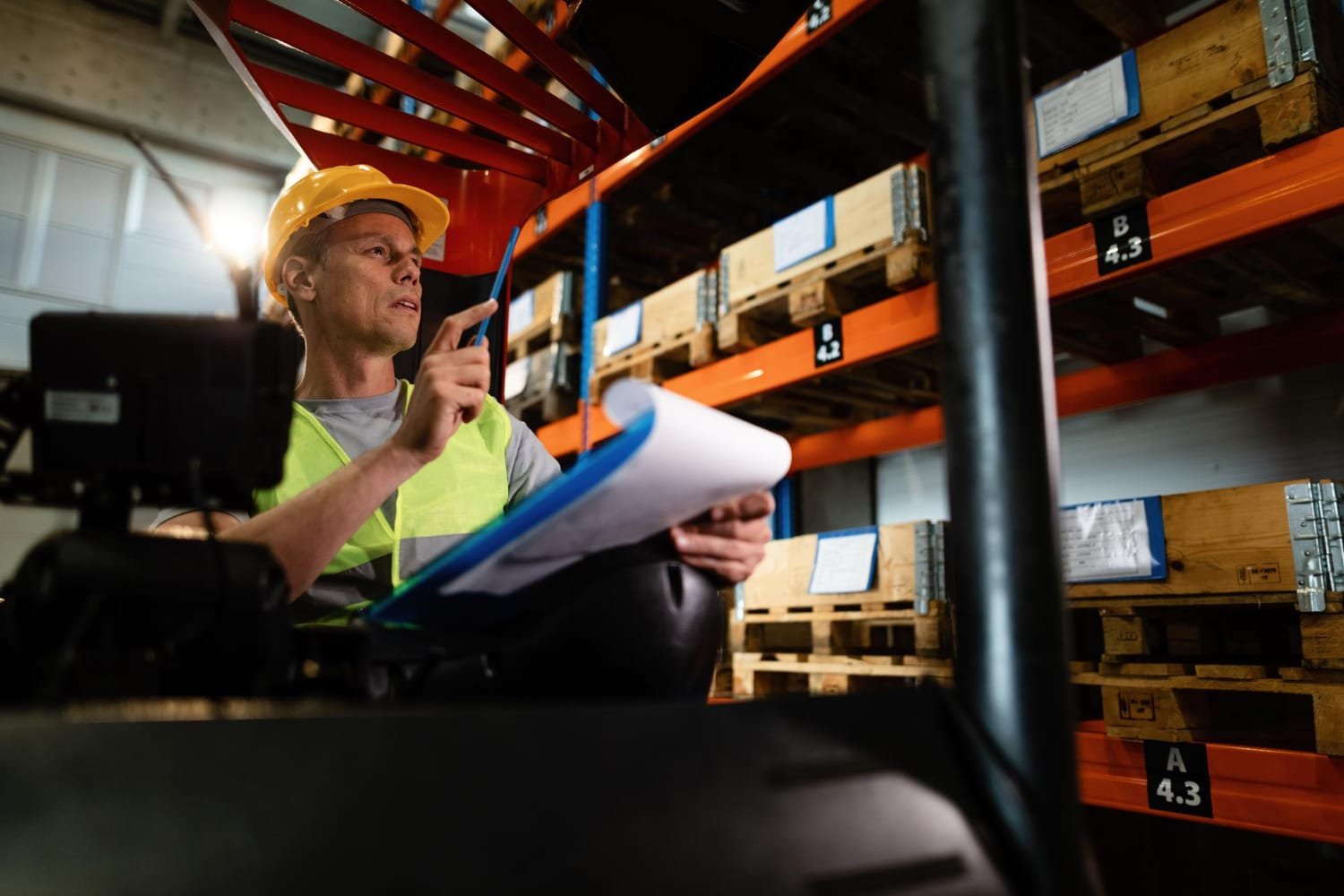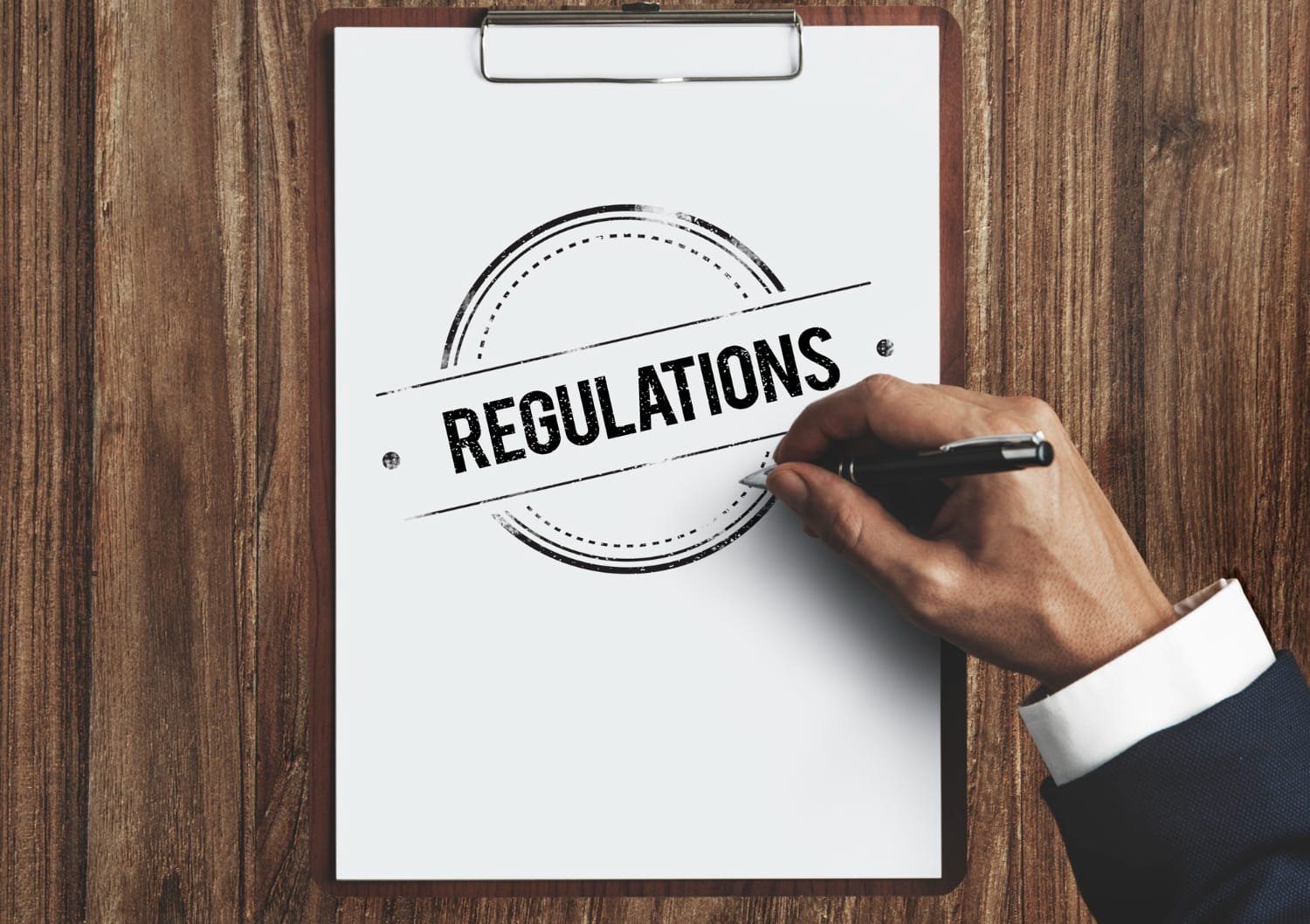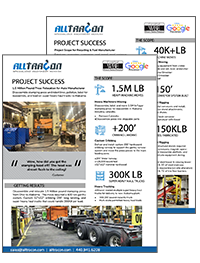International Plant Relocation Considerations: Ensuring Seamless Transitions
In today’s global economy, businesses often find the need to relocate their manufacturing plants to different countries for various reasons such as cost optimization, access to new markets, or changes in regulatory environments. However, international plant relocation is a complex endeavor that requires careful planning, thorough analysis, and precise execution. In this comprehensive guide, we will delve into the key considerations businesses should keep in mind when undertaking the task of relocating a manufacturing plant to an international location.
Understanding the Scope of Relocation
Understanding the scope of relocation is vital for successful international plant relocation. It encompasses assessing logistical challenges, regulatory compliance, cultural adaptation, and workforce considerations. By comprehensively understanding the scope, companies can develop effective strategies to ensure seamless transitions to new locations, minimizing disruptions and maximizing operational efficiency.
Assessing the Need for Relocation
Before embarking on an international plant relocation journey, it is crucial for businesses to clearly define the reasons behind this decision. Some common factors that might necessitate relocation include:
- Market Expansion Opportunities: Expanding into new markets often requires setting up manufacturing facilities closer to the target market to reduce transportation costs and improve responsiveness to customer demands.
- Cost Reduction Strategies: Relocating to a country with lower labor costs, favorable tax incentives, or reduced operational expenses can significantly enhance the bottom line for businesses.
- Access to Skilled Labor: Some industries require access to specialized skills or a larger talent pool, which might be more readily available in certain international locations.
Defining Project Objectives and Goals
Once the need for relocation is established, it is essential to set clear objectives and goals for the project. This includes defining timelines, budget constraints, production targets, and quality standards that the new plant should meet.
- Timeline Considerations: Understanding the time it takes to complete each phase of the relocation process—from site selection to full-scale production—is critical for effective project management.
- Budgetary Constraints: Accurately estimating the costs associated with plant relocation, including site acquisition, construction, equipment transportation, labor, and regulatory compliance, is vital to avoid budget overruns.
Selecting the Right Location
Selecting the right location for a new manufacturing plant is a critical decision that can significantly impact the success of the venture. To ensure the optimal choice, conducting comprehensive location feasibility studies is imperative. These studies encompass various factors that contribute to the suitability of a location for manufacturing operations. Let’s delve deeper into each aspect:
Proximity to Suppliers and Markets
Locating the plant near raw material suppliers and target markets offers several advantages. It reduces transportation costs, minimizes lead times, and enhances supply chain efficiency. Additionally, proximity to suppliers enables better control over quality and inventory management. Similarly, being close to target markets facilitates timely deliveries, reduces distribution costs, and enables quicker response to customer demands.
Infrastructure and Logistics
The availability and quality of infrastructure play a crucial role in the smooth functioning of a manufacturing plant. Assessing factors such as transportation networks, including roads, railways, and ports, as well as access to airports for international shipments, is essential. Adequate logistics infrastructure ensures seamless inbound and outbound transportation of raw materials and finished goods. Moreover, efficient logistics support just-in-time inventory management and reduces the risk of supply chain disruptions.
Political and Regulatory Environment
Evaluating the political stability and regulatory framework of the host country is paramount. Factors such as legal requirements, tax policies, environmental regulations, and labor laws can significantly impact operations and profitability. A stable political environment and favorable regulatory policies contribute to business continuity and provide a conducive operating environment. It’s essential to ensure compliance with all applicable laws and regulations to avoid legal issues and penalties.
Cultural and Social Factors
Cultural and social factors play a crucial role in the success of a manufacturing plant in a new location. Understanding the cultural norms, workforce demographics, language barriers, and social dynamics of the host country is essential for effective communication and collaboration. Cultural differences can impact employee morale, productivity, and overall organizational effectiveness. Therefore, companies must develop strategies to promote cultural awareness, foster inclusivity, and create a supportive work environment.
Cultural Adaptation Strategies
Implementing cultural adaptation strategies is vital for successful integration into a new cultural environment. This may involve providing cross-cultural training programs for employees to enhance their cultural competence and sensitivity. Additionally, hiring local talent and establishing diversity and inclusion initiatives can help bridge cultural gaps and foster a sense of belonging among employees. Building a culturally diverse workforce promotes innovation, creativity, and better decision-making.
Social Responsibility and Community Engagement
Engaging with local communities and demonstrating social responsibility is essential for building positive relationships and fostering goodwill. Companies can achieve this through corporate social responsibility (CSR) initiatives, such as environmental conservation projects, educational programs, or healthcare initiatives. By contributing positively to the community, organizations can enhance their reputation, strengthen stakeholder relationships, and gain local support for their operations.
Selecting the right location for a manufacturing plant involves careful consideration of various factors, including proximity to suppliers and markets, infrastructure and logistics, political and regulatory environment, cultural and social factors, cultural adaptation strategies, and social responsibility. By conducting thorough feasibility studies and implementing appropriate strategies, companies can mitigate risks, optimize operational efficiency, and lay the foundation for long-term success in their new location.

Managing Logistics and Supply Chain
Addressing Regulatory and Compliance Issues
Relocating a plant internationally involves a myriad of regulatory and compliance considerations. Ensuring adherence to local laws, regulations, and permitting processes is not only essential for obtaining necessary approvals but also for operating legally and sustainably in the new location. Let’s delve deeper into the critical aspects of addressing regulatory and compliance issues during the international plant relocation process:
Environmental Impact Assessments
Conducting thorough environmental impact assessments is a crucial step in the relocation process. Environmental regulations vary from country to country, and it’s imperative to ensure compliance with local standards to mitigate environmental risks and liabilities. Environmental impact assessments evaluate the potential effects of the plant’s operations on the surrounding ecosystem, including air and water quality, soil contamination, and biodiversity. By identifying potential environmental risks upfront, companies can implement mitigation measures and adopt sustainable practices that align with regulatory standards and demonstrate corporate responsibility.
Licensing and Certification
Obtaining the necessary licenses, permits, certifications, and approvals from government authorities is fundamental for legal compliance and operational continuity. The specific requirements vary depending on the industry, location, and nature of the plant’s operations. These may include business licenses, environmental permits, building permits, health and safety certifications, and zoning approvals. Navigating the complex landscape of regulatory requirements demands meticulous planning and coordination with regulatory bodies to ensure timely and seamless approval processes. Failure to obtain the requisite permits and licenses can result in legal penalties, project delays, and reputational damage.
Understanding Tax Implications
Tax considerations are a significant aspect of international plant relocation and can significantly impact the company’s financial planning and profitability. Navigating the tax landscape of the host country requires a comprehensive understanding of corporate taxes, import/export duties, value-added taxes (VAT), incentives, and tax treaties. Here’s a closer look at key tax-related considerations:
- Corporate Taxes: Understanding the corporate tax rates and regulations in the host country is crucial for financial planning. Companies must assess the tax implications of their operations, including income tax, capital gains tax, and withholding tax obligations.
- Import/Export Duties: International trade involves customs duties and tariffs that can affect the cost of importing raw materials and exporting finished goods. Analyzing import/export duties is essential for evaluating the overall cost structure and competitiveness of the plant’s operations.
- Value-Added Tax (VAT): Value-added tax is a consumption tax levied on the value added at each stage of the production and distribution process. Understanding VAT regulations and compliance requirements is essential for managing cash flow, pricing strategies, and financial reporting.
- Incentives: Many countries offer tax incentives and concessions to attract foreign investment and promote economic development. These incentives may include tax holidays, investment allowances, accelerated depreciation, research and development (R&D) credits, and special economic zone (SEZ) benefits. Leveraging these incentives effectively can optimize the company’s tax position and enhance competitiveness.
Tax Planning Strategies
Engaging tax experts or consultants familiar with the tax laws and regulations of the host country is essential for devising tax-efficient strategies. Tax planning aims to minimize tax liabilities while ensuring compliance with legal requirements. Here are some common tax planning strategies for international plant relocation:
- Structuring Investments: Choosing the appropriate legal structure for the plant’s operations can have significant tax implications. Options may include setting up a subsidiary, branch, joint venture, or strategic alliance, each with its tax advantages and considerations.
- Transfer Pricing: Managing transfer pricing effectively is crucial for multinational corporations with intercompany transactions. Establishing arm’s length transfer pricing policies can help optimize tax outcomes and mitigate transfer pricing risks.
- Utilizing Tax Treaties: Many countries have tax treaties in place to prevent double taxation and promote cross-border trade and investment. Leveraging tax treaties can help reduce withholding tax rates on dividends, interest, and royalties, thereby enhancing cash flow and profitability.
- Monitoring Legislative Changes: Tax laws and regulations are subject to frequent changes, especially in response to economic developments and geopolitical factors. Staying abreast of legislative changes and regulatory updates is essential for adapting tax planning strategies and ensuring ongoing compliance.
Addressing regulatory and compliance issues is a critical aspect of international plant relocation. Conducting environmental impact assessments, obtaining necessary licenses and permits, and navigating the tax landscape require careful planning, expertise, and collaboration with regulatory authorities. By proactively addressing regulatory requirements and adopting tax-efficient strategies, companies can ensure seamless transitions and lay the foundation for long-term success in their new location.
Ensuring Operational Readiness and Risk Mitigation
Relocating a manufacturing plant internationally involves meticulous planning to ensure seamless operations and mitigate potential risks. Establishing infrastructure and utilities at the new plant location and implementing robust risk management strategies are crucial components of this process.
Establishing Infrastructure and Utilities
Setting up the necessary infrastructure, utilities, and facilities is a foundational step in preparing the new plant for operation:
Facility Design and Construction
Designing an efficient layout for the plant floor, offices, storage areas, and employee facilities is essential for optimizing productivity and workflow. Collaborating with architects and engineers to develop a layout that maximizes space utilization, minimizes bottlenecks, and promotes employee safety and comfort is imperative. Factors such as workflow efficiency, ergonomics, and regulatory compliance must be carefully considered during the design and construction phases. Moreover, incorporating sustainable design principles can contribute to long-term cost savings and environmental stewardship.
Power, Water, and Telecommunications
Ensuring reliable access to electricity, water supply, internet connectivity, and other essential utilities is critical for uninterrupted operations. Coordinating with local utility providers to establish connections and infrastructure for power distribution, water supply, wastewater treatment, and telecommunications is essential. Depending on the location, the availability and reliability of utilities may vary, necessitating thorough planning and contingency measures. Investing in backup power generators, water storage systems, and redundant communication networks can safeguard against utility disruptions and minimize downtime.
Implementing Risk Management Strategies
Identifying potential risks and developing mitigation plans is essential for safeguarding the new plant’s operations and ensuring business continuity:
Contingency Planning
Creating contingency plans, emergency response protocols, and business continuity strategies prepares the company to handle unforeseen challenges effectively. Conducting comprehensive risk assessments to identify potential threats, such as supply chain disruptions, equipment failures, labor shortages, or natural disasters, is the first step in developing contingency plans. Establishing clear communication channels, designated emergency response teams, and evacuation procedures enables swift and coordinated responses to crises. Regular training and drills ensure that employees are prepared to execute emergency protocols effectively.
Insurance Coverage
Securing comprehensive insurance coverage is essential to protect the company’s assets and operations against various risks:
- Property Insurance: Property insurance provides coverage for physical assets, including buildings, machinery, equipment, and inventory, against damage or loss due to fire, theft, vandalism, or natural disasters. It reimburses the company for the cost of repairing or replacing damaged property, minimizing financial losses.
- Business Interruption Insurance: Business interruption insurance compensates the company for lost income and ongoing expenses during periods of suspended operations due to covered events, such as fires, floods, or equipment breakdowns. It helps mitigate the financial impact of disruptions and facilitates the resumption of normal business activities.
- Liability Coverage: Liability insurance protects the company against claims and lawsuits arising from third-party bodily injury, property damage, or other liabilities. It covers legal defense costs, settlements, and judgments, shielding the company from financial liability and reputational damage.
Collaborating with insurance brokers and underwriters to tailor insurance policies to the specific needs and risks of the new plant relocation ensures adequate protection and peace of mind. Regularly reviewing and updating insurance coverage to account for changes in operations, assets, or risk profiles is essential to maintain comprehensive protection.
Ensuring operational readiness and risk mitigation are integral aspects of international plant relocation. Establishing infrastructure and utilities, including facility design and construction, power, water, and telecommunications, lays the foundation for smooth operations. Implementing robust risk management strategies, such as contingency planning and insurance coverage, protects the company against potential threats and promotes business continuity. By prioritizing these considerations, companies can navigate the complexities of plant relocation successfully and achieve seamless transitions to new locations.
Conclusion: A Roadmap to Success
International plant relocation presents both challenges and opportunities for businesses seeking to expand their global footprint. By understanding the scope of relocation, selecting the right location, managing logistics and supply chains, addressing regulatory compliance, and ensuring operational readiness, companies can navigate this complex process with confidence. With meticulous planning, strategic decision-making, and effective risk management, businesses can achieve a seamless transition to their new international manufacturing plant, unlocking new growth prospects and competitive advantages in the global market landscape.




